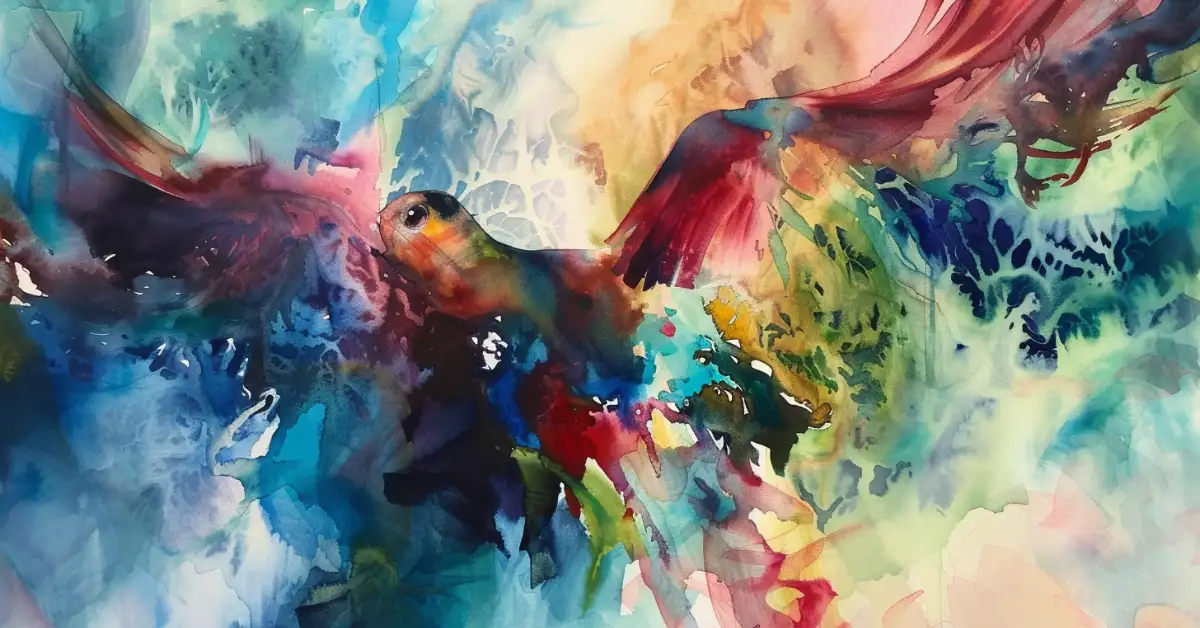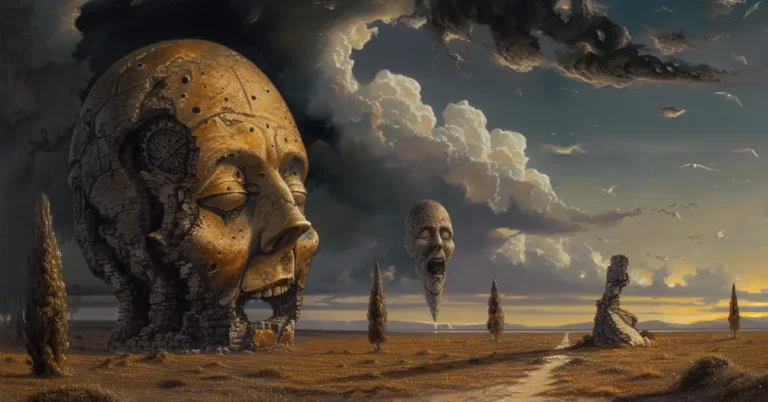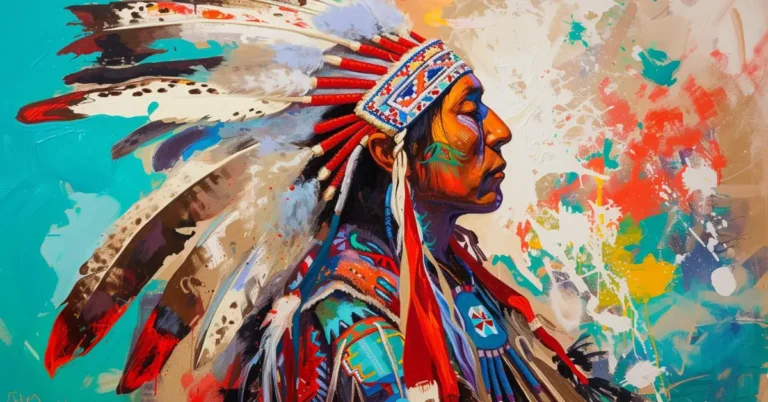A contemporary artist embodies the pulse of our modern era, crafting art that resonates with today’s cultural and societal nuances. If you’re seeking to understand how these creators use their mediums—be it painting, sculpture, or digital innovation—to comment on and influence our world, this exploration is for you. Discover how contemporary artists challenge conventions and invite us to reflect on our rapidly changing society, offering a window into the collective consciousness of our time.
What is a Contemporary Artist?
Here is all in short about “what is a contemporary artist”.
Key Characteristics:
- Time Frame: Art created in the late 20th and early 21st centuries.
- Medium and Form: A wide variety, including painting, sculpture, digital art, and performance.
- Themes: Often address current social and political issues.
- Techniques: Innovative use of materials and technology.
By engaging with the present, these artists provide us with a mirror that reflects our times with authenticity and critical insight. What sets them apart is not just the period in which they work, but their approach to creating art. They experiment and push boundaries, re-evaluating and reinventing the notion of art itself. Their works can be seen in galleries, street corners, and various digital platforms, making contemporary art an ever-accessible part of our daily lives.
Prominent Contemporary Artists
When exploring what is a contemporary artist, we journey into a world where each creator reflects the dynamics of our era, often making profound statements about society, technology, and culture.
Ai Weiwei

Ai Weiwei is a leading voice in global contemporary art. Known for his political activism and social commentary, his work spans sculpture, installations, and architecture.
Banksy

The mysterious figure of Banksy uses street art to deliver powerful, and sometimes controversial, messages. His works are characterized by sharp satire and subversive epigrams.
Damien Hirst

Exploring themes of life and death, Damien Hirst is famous for his series of artworks featuring preserved animals in formaldehyde and his spot paintings.
Jeff Koons

Jeff Koons challenges the boundaries between high art and popular culture with his kitsch, often monumental sculptures that play with notions of consumerism.
Marina Abramović

As a pioneer in performance art, Marina Abramović tests the limits of her body and mind, inviting us to question our own perceptions about presence and endurance.
Yayoi Kusama

Yayoi Kusama mesmerizes with her infinite polka dots and mirrored rooms. Her captivating installations offer a glimpse into her unique vision of the universe.
Francis Bacon

Though Francis Bacon may not be contemporary as per today’s definition, his impact lingers powerfully. His raw, emotive paintings delve into the human condition.
Kara Walker

Kara Walker is renowned for her candid exploration of race, gender, sexuality, and violence through her silhouetted figures and powerful narrative imagery.
Anselm Kiefer

With commanding use of materials and historical references, Anselm Kiefer‘s work confronts the collective memory and cultural identity, often reflecting on trauma and rebirth.
Jean-Michel Basquiat

Jean-Michel Basquiat emerged from the 1980s New York art scene, creating vibrant works that spoke to issues of race, poverty, and the urban environment. His legacy continues to influence artists like Keith Haring, Kerry James Marshall, and Njideka Akunyili Crosby.
Defining Contemporary Art
As we dig into the essence of what a contemporary artist creates, it’s essential to understand the fabric that makes their art stand out: the here and now. Their craft isn’t just about making something visually pleasing; it’s a dialogue with our time, an embodiment of the ideas, values, and complexities that define our era.
Influence of Time and Era
Contemporary art is a mirror reflecting the social, political, and technological nuances of the time it’s born into. This art form seizes the present—the shifting tensions and triumphs that stitch together our personal and collective histories. It lives and breathes the pulse of our ever-evolving society, ensuring that each creation is a snapshot of today’s world.

Key Concepts
Artists navigating the contemporary landscape wield a compelling mix of innovation and introspection.
- Identity and self-expression
- Globalization’s impacts
- Technological metamorphosis
- Environmental issues
These topics are but a handful of the threads woven into the rich tapestry of contemporary artistry.
Contrasts with Modern Art
It’s easy to blur the distinctions between contemporary and modern art, but here are the key features that set them apart:

- Modern Art typically refers to artworks created from the late 19th century to the 1970s.
- Contemporary Art begins where modern art ends, but is rooted firmly in the present, continuing to evolve with the times.
Unlike the modern era’s focus on abstraction and form, contemporary artists may integrate interactive, digital, or mixed-media elements, redefining the boundaries of what art can be.
Artistic Mediums and Practices
When we think about what is a contemporary artist, we often picture individuals pushing the boundaries across various mediums, merging traditional techniques with innovative practices to create thought-provoking works.
Painting and Sculpture

Contemporary artists often revisit the time-honored mediums of painting and sculpture but with a twist. They might incorporate unexpected materials or blend the two mediums, effectively reshaping our understanding of what can be achieved. For example, artists might use traditional oil paint in a fresco or 3D printing techniques for sculptures, bringing a modern perspective to these classic forms.
Installation and Performance

Installation art encompasses works that are site-specific and designed to transform the perception of a space. Think of it as immersive art, where you can walk in and be surrounded by the piece. On the other hand, performance art is about the act itself, with the artist’s actions becoming the artwork, often questioning the role of the audience and space.
Photography and Digital Art

Lastly, photography and digital art represent facets of contemporary art that heavily rely on technology. Digital art is ever-changing, taking advantages of new innovations like augmented reality or artificial intelligence to create pieces that couldn’t have been imagined a few years ago. Photography, while a historic medium, continues to be revolutionized by contemporary artists who manipulate images digitally or blend them with other art forms to push the boundaries further.
Art Movements and Styles
When we explore “what is a contemporary artist,” it’s crucial to understand the art movements and styles that shaped today’s art scene. A contemporary artist is not confined to a single medium or philosophy and often experiments across various art forms to express their vision.
Postmodernism and Beyond

Postmodernism emerged as a reaction to Modernism, challenging its principles with a more diverse and eclectic approach. This movement embraced concepts like pluralism and deconstruction, seeking new ways to interpret art. Pop Art and Minimalism are often associated with the postmodern era, where artists like Andy Warhol transformed everyday objects into art, while others, such as Donald Judd, focused on the essence of form and space.
New Media Art has also become a key aspect of postmodernism and beyond. This includes digital art, an area where artists leverage technology to push the boundaries. Surrealism continues to influence contemporary artists, blending the real and the subconscious in thought-provoking pieces. Recognizing these currents helps us understand the context in which a contemporary artist operates.
Emerging Trends in Art

As we move further into the 21st century, we see Emerging Trends in Art that redefine what a contemporary artist can be. The rise of digital artists highlights the ever-growing relationship between art and technology. These artists often delve into new media, creating works that could only exist in our digital era.
Similarly, conceptual artists prioritize ideas over form, a notion first solidified in avant-garde movements. This genre of art is reflective, provoking contemplation on social, political, and philosophical themes. Such trends have also given voice to Outsider Art, where self-taught artists gain recognition, challenging traditional definitions of artistry.
Photorealism continues to captivate, with artists creating astonishingly realistic paintings that blur the line between painting and photography. Additionally, abstract art remains a fundamental style within contemporary art, echoing the emotional intensity and spontaneity of movements like Abstract Expressionism. These styles and movements form the rich tapestry from which contemporary artists draw their inspiration.
FAQ – What is a Contemporary Artists
What defines a contemporary artist?
A contemporary artist is someone who creates art in the present day, reflecting current issues and working in a global, culturally diverse context.
What is contemporary arts and example?
Contemporary art is art produced from the late 20th century to the present, characterized by its global nature, the diversity of cultures it represents, and the influence of technology and mass media. An example is “Maman” by Louise Bourgeois, a giant spider sculpture.
What is the difference between modern and contemporary artists?
Modern artists created works from the late 19th to mid-20th century, focusing on new styles like Impressionism and Surrealism, while contemporary artists work in the late 20th and 21st centuries, often addressing current issues and utilizing diverse, innovative practices.
What are the characteristics of contemporary artists?
Contemporary artists often embrace experimental approaches, diverse materials, and conceptual practices. They may address political, social, and cultural issues, reflecting the complexity of today’s world. Collaboration and multimedia elements are also common features.
If you enjoyed reading our blog post on “What is a Contemporary Artist,” we’d love to hear from you! Please feel free to share your thoughts in the comment section below. Your feedback is valuable to us.
If you want to keep reading more from us, have a look at these articles.






